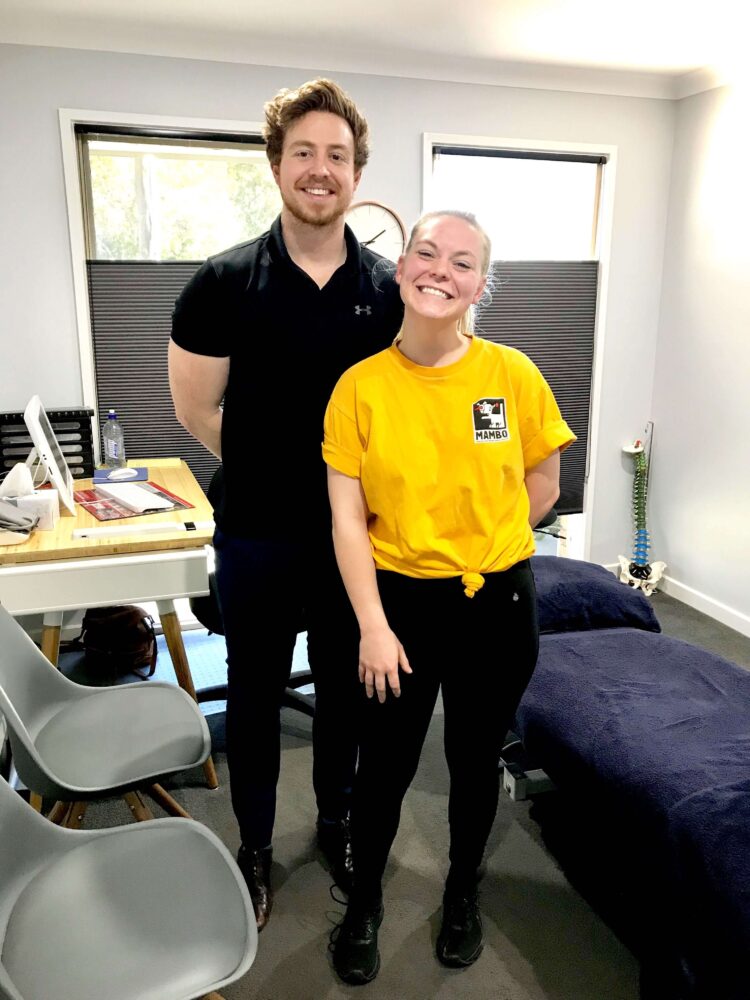Knee Pain and Injury
WANT HELP WITH KNEE PAIN?

Knee Pain Treatment
FED UP WITH SORE KNEES?
The knee is a hinge joint and it is prone to a large variety of aches, pains and injuries.
Sports people can often injure the ligaments in and around the knee, such as an ACL tear, whereas the more senior population are more prone to knee arthritis.
Our Osteopaths are trained to identify the source of your knee pain then treat you using a range of techniques including massage, stretching, joint mobilisation and rehabilitation exercises. We strive for results where other treatments have failed.
Choose Your Osteopath
OUR OSTEOPATHS ARE EXPERIENCED IN TREATING KNEE PAIN AND INJURY
I enjoy treating
I enjoy treating
I enjoy treating
Don’t Put It Off Any Longer
CHOOSE YOUR OSTEOPATH AND BOOK ONLINE OR CALL AND WILL MATCH YOU WITH THE BEST OSTEOPATH TO TREAT YOUR KNEES
THERE ARE MANY CAUSES OF KNEE PAIN AND WE HAVE TREATED ALL OF THEM!
Some of the more common injuries that we see in the clinic are anterior cruciate ligament (ACL) tears, meniscus tears, patella tendon injuries, knee joint degeneration (OA) and patello-femoral pain syndrome.
OUR WEIGHT CAN CONTRIBUTE TO KNEE PAIN AND INJURIES
The kneecap protects the tendon from constantly sliding over the knee joint. It’s able to support 5 times our body weight – that means it can bear around half a tonne or the weight of a saltwater crocodile! But increased demand can result in joint wear-and-tear or degeneration. For every kilogram (kg) of weight we put on, an extra 4 kgs of pressure goes through our knee joint.
HAVE YOU TRIED DIFFERENT KNEE PAIN TREATMENTS BUT NOTHING SEEMS TO WORK?
With over 50 years combined clinic experience, we have seen just about every type of knee pain and injury imaginable. These include ligament sprains, tendon injuries, arthritis, meniscus injuries amongst others. And we would love to help you. We strive for results with common, complex and chronic knee injuries where other treatments have failed.
DO YOU HAVE QUESTIONS?
Call 5941 4157 or talk to us via the chat box to have your questions answered straightaway.
MORE ABOUT THE KNEE
The knee is quite a complex structure of the human body that takes on a significant amount of load and stress. It is for this reason that the knee is commonly a large contributor to pain and vulnerable to dysfunction in all ages and fitness levels.
Anatomy
The knee is a hinge joint that is responsible for weight bearing and is vital for movement. It is made up of:
Bone: This includes the femur (thigh bone), tibia (shin bone), patella (knee cap) and fibula (thin bone on the outside of the leg).
Cartilage: Between the femur and tibia there is cartilage called the menisci that assists with shock absorption and fluid movement of the knee.
Ligaments: There is the anterior and posterior cruciate ligaments (ACL and PCL) which prevent forward and backward sliding of the tibia on the femur. There is also the medial and lateral collateral ligaments (MCL and LCL) that prevent side to side sliding.
Other: There is a multitude of muscle tendons which cross the knee joint helping with stability and movement. In addition, your knee is home to many bursa (fluid filled sacs) which reduce friction and aid smooth movement of the knee.
COMMON KNEE INJURIES AND CONDITIONS
Ligament Sprains
These injuries are common in sports such as football, basketball and soccer where a sudden change in direction, or any motion which causes a twisting motion of the knee, occurs. This motion puts high stress through these stabilising ligaments where excessive load can result in a sprain or tear. The ACL and MCL are the most common of the four to become injured.
Possible Symptoms:
– Pain and swelling
– Instability and inability to weight bear
– May hear a pop
Diagnosis:
Your osteopath will assess your knee based on how you injured your knee and your symptoms to decide on a diagnosis and management plan. Depending on the severity of pain and instability you may require further imaging to assess the degree of the injury.
– Grade 1: Mild stretching of the ligament, knee is still stable
– Grade 2: Moderate overstretching of the ligament, ligament is loose
– Grade 3: Full rupture of the ligament, knee is unstable
Treatment:
Treatment will depend on the severity of the injury. Full rupture may require surgery. Non-surgical treatment includes:
– Rest, ice, compress and elevate leg if swollen
– Wear a brace to help protect and stabilise knee
– Manual therapy to reduce muscle tightness and increase range of motion
– Strength exercises to assist knee stability and reduce risk of future injury
Recovery:
– Grade 1 Sprain: Usually within a few weeks
– Grade 2 Sprain: May take up to 8 weeks
– Grade 3 Tear: Non-surgical can take approximately 3-4 months, with surgery up to 12 months
Meniscus Tears
Just like ligament injuries of the knee, meniscus injuries are also common in sports such as football, basketball and soccer where a twisting motion of the knee may occur whether from landing awkwardly, changing direction or with impact to the area. It is also common for the menisci to be injured in conjunction with a ligament injury due to a shared mechanism of injury.
Possible Symptoms:
– Pain and swelling
– Inability to weight bear
– May hear a pop
– Difficulty bending or straightening the knee
– A sensation of the knee locking, clicking or giving way
Diagnosis:
Your osteopath will assess your knee based on how you injured your knee and your symptoms to decide on a diagnosis and management plan. Depending on the severity of pain and instability you may require further imaging to assess the degree or the tear or if an ACL injury is also suspected.
Treatment:
Treatment for a meniscus tear will also depend on the severity of pain, locking and function. If the knee continues to cause pain and dysfunction following conservative treatment and management then surgery may be required. Non-surgical treatment includes:
– Rest, ice, compress and elevate leg
– Use of a brace to reduce stress placed on the knee in early stages
– Manual therapy to reduce muscle tightness and increase range of motion
– Strength exercises to assist stability in the knee and reduce risk of future injury
Patella Tendonitis / Tendinopathy
This is an overuse injury that results in the patella tendon (between the kneecap and shin bone) becoming overstretched and overloaded, causing one or more of its fibres to become irritated and potentially inflamed. It commonly occurs in people who participate in sports such as basketball, football, athletics, gymnastics and skiing as the greatest amount of load in the patella tendon is experienced with jumping, landing and repetitive squatting.
Possible Symptoms:
– Gradual onset of pain just below the knee cap
– Stiffness before and after activity
– Pain worse when kneeling or squatting
Diagnosis:
Diagnosis of patella tendinopathy can be made through a clinical assessment when used in conjunction with patient reported symptoms and onset. Imaging is rarely necessary unless exclusion of an alternative injury is required. Your osteopath will test certain movements to reproduce your normal pain and match it with normal findings of this injury.
Treatment:
The goal of treatment is to reduce the current load going through the tendon by altering physical activity in the short term and to address the cause of increased load in the patella tendon (biomechanics and weaknesses). Treatments include:
– Controlled rest
– Stretching and manual therapy
– Taping to offload the tendon
– Strengthening to address any deficiencies that may overload the patella tendon
– Advice on training load
Recovery:
In mild cases, this condition with the right management can usually resolve within 4 weeks. In more severe cases it can last up to 6 months.
Osteoarthritis and Degeneration
Osteoarthritis is the most common form of arthritis involving wear and tear of the cartilage that lines the joints. Due to the amount of load that goes through the knee joint, it is a common victim of osteoarthritis. There are factors that put you at greater risk of developing osteoarthritis and these include; previous injury, being overweight, history of repetitive use and loading of the knee.
Possible Symptoms:
– Pain
– Stiffness
– Swelling
– Reduced range of motion
– Clicking in the joint
Diagnosis:
Diagnosis of osteoarthritis can be done by collecting a history of your pain, background, occupation and lifestyle in addition to a physical examination that will look for a pattern of decreased range of motion and pain.
If another condition or form of arthritis is suspected, other tests or imaging may be recommended to rule these out before a definitive diagnosis of OA is made.
Treatment:
While there is currently no cure for osteoarthritis, there are many ways to treat and manage symptoms to ensure a happy and healthy lifestyle going forward. Treatment options include:
– Physical and manual therapy
– Weight loss program (if overweight to reduce stress in joints)
– Individualised exercise program
– Assistive devices (braces, walking stick)
WHAT AN OSTEOPATH CAN DO FOR YOUR KNEE PAIN
Some general goals of treatment include:
– Increase and maintain joint mobility and flexibility
– Strengthen muscles surrounding your knee
– Teach you how to move and use those joints correctly
– Address any risk factors and correcting imbalances
– Keep you positive, healthy and active
Your osteopath will do this by:
– Using soft tissue massage and joint mobilisation techniques
– Tailoring and coaching at home stretches and exercises
– Managing training loads when returning to exercise/sport
– Recommending any assistive devices that may help (brace)
– Educating you on what the injury is and what the management plan entails.
If you experience pain or dysfunction in your knee your osteopath can assess, diagnose, treat and tailor a management program for you. By assessing the exact cause of your knee pain, a detailed and structured management plan can be put in place to give you the best chance at reaching whatever goals you may have, whether this be returning to sport and exercise, or living out your normal daily life without pain.
- 5 Steps to Get The Best Sitting Posture While Working from Home - August 7, 2020
- Home Based Exercise - March 28, 2020
- HOW CAN OSTEOPATHY HELP MY SHOULDER PAIN? - March 3, 2020








